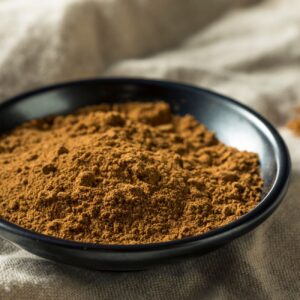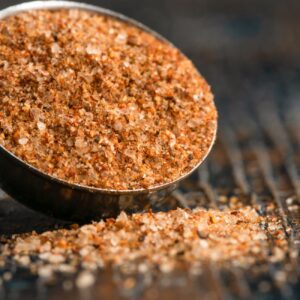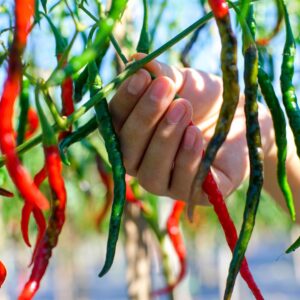When it comes to comfort food in America, pizza is king. This cheesy, saucy, and crusty delight is as versatile as it is beloved. It’s the go-to dish for celebrations, casual get-togethers, and those lazy nights when cooking just feels like too much work. But pizza isn’t just about toppings and cheese; it’s the spices and herbs that make each slice sing. Get your pizza cutters ready as we examine the different flavors that makes American pizza so special.
A Slice of History
The earliest form of pizza can be traced back to the ancient Greeks and Romans, who baked flatbreads topped with simple ingredients. However, the modern pizza as we know it emerged in 18th-century Naples, Italy, where it was initially a street food for the working class. Originally a dish for the poor, pizza was a simple affair with dough, tomato sauce, and cheese. But it was Italian immigrants in the United States who truly made pizza what it is today. It took off post-World War II, and by the 1950s, pizza was cemented as a beloved American staple.
Spices, Herbs and American Pizza
Here’s a look at the herbs and spices that make pizza the flavorful sensation it is:
- Oregano: This superstar herb is a pizza classic. Its slightly bitter and earthy flavor complements tomato sauce and cheese perfectly.
- Basil: Fresh basil is a must on a Margherita pizza, offering a sweet, slightly peppery flavor that livens up any pizza.
- Garlic: Whether minced, roasted, or powdered, garlic is the flavor foundation of many sauces. It’s a pizza essential.
- Red Pepper Flakes: For those who like their pizza with a kick, these little flakes of fire add just the right amount of heat.
- Parsley: Fresh parsley adds a pop of color and a fresh, slightly bitter flavor to finish off a pizza.
- Rosemary: A surprising but delightful addition, rosemary’s pine-like flavor adds depth to pizzas, especially when paired with potatoes or meats.
- Thyme: Thyme’s subtle minty flavor works wonders with mushrooms and meats, bringing out their natural umami.
- Fennel Seeds: Often found in Italian sausage, fennel seeds add a sweet, licorice-like flavor that complements hearty toppings.
- Cracked Black Pepper: A staple in any spice rack, black pepper adds a subtle, sharp heat to pizza.
For more spices and herbs, check out our Spice Station Shop!
The Great American Pizza
Pizza in America is more than just pepperoni and cheese. Here are some variations that are worth a slice or two:
- New York-Style Pizza: Famous for its large, thin slices and crispy crust, this pizza is often topped with simple ingredients like cheese, pepperoni, and oregano.
- Chicago Deep-Dish: More of a pie than a pizza, it’s deep, cheesy, and often includes layers of sausage and chunky tomato sauce, with a hint of garlic and basil.
- Detroit-Style Pizza: Rectangular with a thick crust, it’s often topped with cheese right to the edges, caramelizing the crust, and finished with a ladle of sauce.
- California Pizza: Known for its innovative toppings like avocado, arugula, and figs, California pizza is a playground for creativity and fresh herbs.
- St. Louis-Style Pizza: Thin and crisp, it’s cut into squares and often topped with Provel cheese, a blend of cheddar, provolone, and Swiss.
Spicing Up Your Pizza Game
If you’re looking to take your pizza to the next level, here are a few tips:
- Start Small: It’s easier to add more spices than to take them out, so start with a small amount and gradually add more.
- Mix It Up: Don’t just stick to oregano. Try adding a sprinkle of rosemary, thyme, or fennel seeds to change up the flavor profile.
- Infuse the Oil: Garlic-infused olive oil is a pizza game-changer. Brush it on the crust for an extra flavor punch.
- Add After Baking: Fresh herbs like basil and parsley are best added after the pizza is out of the oven, to preserve their bright flavors.
- Go Wild with Toppings: Think beyond pepperoni. Try smoked salmon with dill, or prosciutto and arugula with a drizzle of balsamic glaze.
- Complementing Toppings: Choose herbs and spices that complement the toppings. For instance, basil pairs well with tomatoes, and oregano goes great with cheese.
- Experiment: Don’t be afraid to try new combinations, like mint and lamb, or sage and sausage.
Pizza is America’s all-time favorite food for a reason. It’s versatile, delicious, and can be customized to suit any taste. The herbs and spices are the unsung heroes that give pizza its unforgettable flavors. So, the next time you’re enjoying a slice, take a moment to appreciate the blend of herbs and spices that make it so special. And if you’re making your own, don’t be afraid to experiment and find your perfect pizza flavor!












